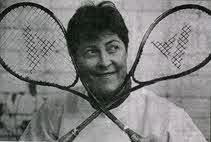Buteyko & Sport
Whether you play soccer or a round of golf, Buteyko can help you overcome your EIA (exercised induced asthma) and may even improve your performance if speed or endurance is required. In this section, you’ll find out how Buteyko helps athletes and look at the famous athletes who use the Buteyko techniques. The Australian Institute of Sport (AIS) is currently arranging trials to investigate the performance enhancing effects of Buteyko.
When athletes practice the Buteyko they find that they are able to train harder and increase their performance.
The Physiology
When exercising, a large amount of oxygen is needed by the body and this oxygen is carried by haemoglobin in the blood stream. Carbon dioxide is the main controller of the diameter of the arteries and veins carrying blood around the body. Low levels of carbon dioxide cause the smooth muscle wrapped around these blood vessels to tighten and therefore restrict blood flow and consequently oxygen to the muscles.
The level of carbon dioxide in the blood controls the pH (acid-alkali) balance. Carbon dioxide converts to carbonic acid to prevent respiratory alkalosis. if there is insufficient carbonic acid then the muscles produce lactic acid to provide the energy which is so badly needed at this time. It is the hydrogen ion balance connected to the lactic acid production which makes the muscles tired and sore, preventing athletes from training hard and giving top performance.
Haemoglobin carries oxygen to the muscles and tissues. When there are adequate levels of carbon dioxide haemoglobin releases oxygen more readily than when there are low levels. Thus, higher or normal levels of carbon dioxide increase the amount of oxygen able to be used by the muscles when you exercise.
Breathing too much results in excessive amounts of mucus being produced in the airways which decreases the space inside them. The smooth muscle wrapped around these tubes tightens and further decreases the space, restricting airflow. and ultimately oxygen intake.
By practicing the Buteyko normal levels of carbon dioxide are maintained for longer periods while exercising. This results in airway and blood vessel dilation maintained for longer periods and less lactic acid produced.
Athletes do not tire as quickly, there are less breathing problems and the heart is put under less strain. Performance is enhanced and recovery periods are shortened, allowing training sessions to be increased both in difficulty and length.
Buteyko Athletes:

Caren Clonda, World Junior Squash Champion developed extremely severe asthma requiring nebulisers of relievers every day and the frequent use of prednisone. This problem, combined with chronic fatigue syndrome which she blames on the enormous amount of medication prescribed for her asthma, stopped her promising career. In February 1994 she learned the Buteyko and had such good success that she dedicated herself to a project where 100 top Australian athletes will be involved in research of the method.
Craig Riddington, former Ironman Champion tried Buteyko after being plagued by asthma during the 1995 Uncle Toby Series. He is one of the athletes involved in the asthma/Buteyko research. “I went for a couple of weeks and, within the first week, I’d pretty much knocked it (asthma) over.”
Raymon Anderson, who won a bronze medal in the Barcelona Olympics for his kayaking ability uses the Buteyko Method. “When I first went to my Buteyko breathing class, a few things came out of the left-field but I thought about the basics of it and was pretty sure it could help me. I went along and almost straight away I started sleeping better. Then when I started training harder, I noticed my heart rate dropping much quicker. It was going from 170 down to 90 in a minute, normally it would drop to around 100 or 110.”
Con Barrell, former New Zealand All Black found that by using Buteyko he could continue to play football at a high competitive level. Formerly dependent on heavy doses of steroid preventers to control his condition, Barrell now feels 100% improved. “I no longer need all the steroids as I don’t get asthma symptoms the same,” he says. “I still take some medication, but nothing like it used to be. The Buteyko course was the best asthma education I have ever had. It made a huge difference to my life.”
